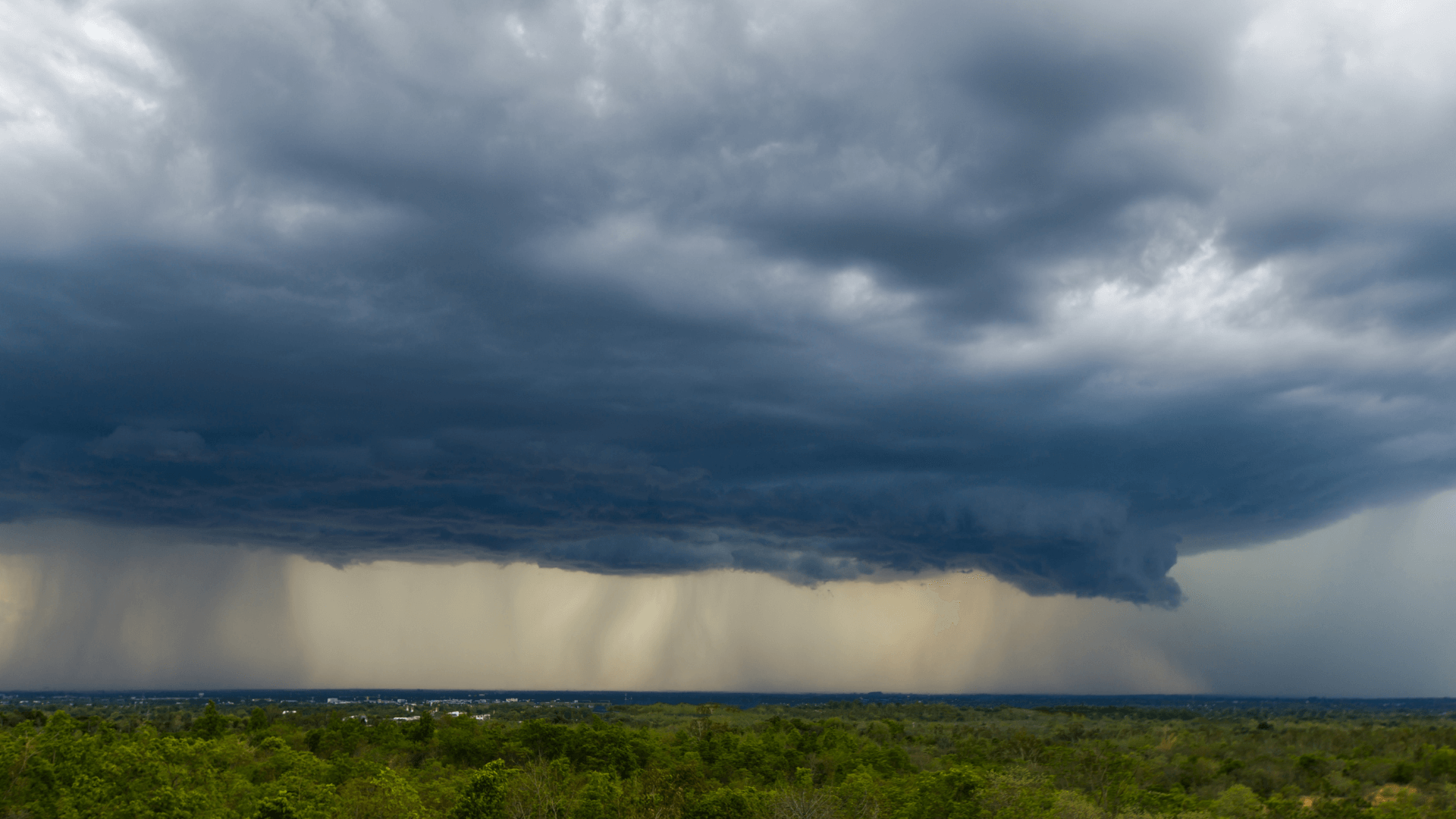As the old adage goes, “April showers bring May flowers.” But with those showers often come unpredictable spring storms that can wreak havoc if you’re not prepared. Spring is a season of rebirth and renewal, but it’s also a season that can bring an array of weather emergencies — from severe thunderstorms and tornadoes to flooding and even late-season snowstorms. Understanding the unpredictability of spring weather is the first step in ensuring your safety. In this blog post, we’ll share essential tips on how to prepare for these spring storms and emergencies.
Understanding Spring Weather Patterns
One of the main reasons spring is prone to severe weather is the clash of air masses. As the season transitions from winter to summer, warm, moist air begins to move northward, colliding with the lingering cool, dry air. This dramatic change in temperature and humidity can create unstable atmospheric conditions, leading to the formation of storms.
In addition, spring is also a time when the jet stream—a high-speed river of air that circles the globe—begins to shift. This can lead to increased wind shear, a change in wind speed or direction over a short distance. Wind shear can cause severe thunderstorms and is a crucial ingredient in the formation of tornadoes.
Types of Spring Storms
Spring is known for a variety of storm types, including:
Thunderstorms: These are common in spring and can bring heavy rain, lightning, hail, and strong winds. Severe thunderstorms can also spawn tornadoes.
Tornadoes: Spring is considered part of “tornado season,”, especially in certain parts of the U.S. known as “Tornado Alley”. Tornadoes are violent and can cause extensive damage.
Flash Floods: Heavy spring rains can easily lead to flash flooding, with the ground often still saturated from melting snow.
Hailstorms: Hailstorms are produced by some severe thunderstorms and can cause significant property damage.
Preparing Your Home for Spring Storms
With spring storms on the horizon, safeguarding your home is a top priority. Taking proactive measures now can minimize potential damage and ensure that your home remains a safe haven during turbulent weather.
Home Preparation Tips
Secure Outdoor Items: High winds can turn unsecured items into dangerous projectiles. Secure outdoor furniture, grills, and other movable items or store them inside if a storm is forecasted.
Check Your Roof: Winter’s harsh weather can leave your roof vulnerable to leaks. Inspect your roof for potential issues, such as missing or damaged shingles, and make necessary repairs before the rainy season starts.
Clean Gutters and Drains: Clear out any leaves or debris in your gutters and drains to prevent water buildup and potential overflow during heavy rains.
Inspect Your Trees: Check for dead or overhanging branches that could fall on your house during a storm. If necessary, consider hiring a professional to trim your trees.
Install a Sump Pump: If your home is prone to flooding, consider installing a sump pump to remove excess water.
Check Your Insurance Coverage: Review your homeowner’s insurance policy to ensure it covers storm damage. It’s also a good time to inventory your home possessions if you need to file a claim.
Install Smart Security Sensors: In the event of a storm, they can alert you to issues such as water entering your basement or any other area of your home where you place a water sensor. With real-time notifications sent directly to your smartphone, you can address these issues promptly, potentially saving you time and money on repairs. Plus, CPI’S smart water sensor is compatible with CPI’s Smart Water Shut-Off Valve, making it easy to cut the water off to prevent further damage.
Plan for The What-If: The Importance of an Emergency Kit
In addition to preparing your home physically, it’s crucial to have a well-stocked emergency kit. This kit should include essentials like non-perishable food, bottled water, flashlights, batteries, a first-aid kit, prescription medications, and essential documents. Remember to check your kit regularly and replace expired items.
Preparing your home for spring storms might seem daunting, but taking these steps can provide peace of mind and help keep you and your loved ones safe during severe weather.
Preparing Your Family for Spring Emergencies
One of the first steps in preparing for emergencies is to create a family emergency plan. This plan should detail what each family member should do in different emergencies. Here’s how to get started:
Identify Safe Spots: Determine the safest places in your home during severe weather.
Designate Meeting Places: Choose two meeting places— one near your home and one outside your neighborhood— if you need to evacuate your home or neighborhood.
Practice Regularly: Once you’ve created your plan, practice it regularly so everyone knows what to do.
Make Sure Your Children Know Your Safety Procedures: It’s crucial to teach your children about safety procedures. Explain the different types of spring storms and what they should do when one occurs. Encourage them to ask questions and express their fears. By doing so, you can help them feel more secure and prepared.
Knowing Evacuation Routes and Safe Places
Understanding your local evacuation routes is essential. Familiarize yourself with these routes and keep a map in your car if you need to evacuate quickly. Remember, the quickest route might be blocked during a storm, so alternative routes are beneficial.
In addition to knowing evacuation routes, identify safe places in your home where your family can take shelter during a storm. This could be a basement, storm cellar, or an interior room on the lowest floor with no windows.
Preparation is not just about survival; it’s about comfort and peace of mind. When you prepare your family for spring emergencies, you’re teaching them valuable life skills and helping them feel more secure in handling whatever Mother Nature throws their way.
The Role of Technology in Storm and Emergency Preparedness
Technology plays a crucial role in spring storm detection and emergency preparedness, providing valuable tools to keep us informed and safe. From weather apps to smart home sensors, these technologies can provide real-time updates and alerts to help us stay one step ahead of severe weather conditions.
Technologies for Storm Detection and Emergency Alerts
Weather Apps: These apps provide real-time weather updates, forecasts, and severe weather alerts. Some popular options include the Weather Channel, AccuWeather, and Weather Underground. Many of these apps allow you to customize alerts for your specific location.
NOAA Weather Radios: The National Oceanic and Atmospheric Administration (NOAA) broadcasts weather information 24/7. A NOAA Weather Radio can provide lifesaving alerts about severe weather in your area.
Social Media: Platforms like Instagram and Facebook often have real-time updates during extreme weather events. Following local meteorologists, news stations, and emergency management agencies can keep you informed.
As we approach the spring season, we encourage you to take proactive steps toward preparing your homes and families. Remember, it’s better to be over-prepared than under-prepared. Let’s welcome the spring with readiness, resilience, and the assurance that we’re prepared to face whatever Mother Nature has in store.
Enhancing Protection with CPI Smart Home Security Sensors
Incorporating smart technology like CPI Smart Home Security Sensors into your home can provide additional peace of mind during severe weather events. These sensors alert you to potential security threats and can detect environmental dangers like water leaks or drastic temperature changes. You can take swift action to mitigate damage and protect your home by receiving immediate alerts.
Want to learn more about CPI Smart Home Security Sensors? Jump on a call with a CPI expert today to learn more about how smart security systems can protect your home. Don’t wait until it’s too late. Be prepared for whatever Mother Nature throws your way with CPI Smart Home Security Sensors.




